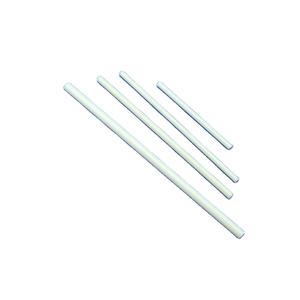Professional industry ceramic supplier, silicon nitride, silicon carbide, aluminum nitride and any other kinds of ceramics.
PRODUCT PARAMETERS
Description
Overview of Surface Metallization Aluminum Oxide Substrate Al2O3 Alumina Metallized Ceramic Plate
Surface Metallization Aluminum Oxide Substrate Al2O3 Alumina Metallized Ceramic Plate are one of the most widely used and versatile technical ceramics, prized for their excellent combination of properties. Composed primarily of aluminum oxide (Al₂O₃), they offer outstanding hardness, wear resistance, and electrical insulation, even at high temperatures. From low-purity grades for general industrial use to high-purity compositions for demanding applications, alumina ceramics provide a cost-effective and reliable solution across a vast range of industries.
Features of Surface Metallization Aluminum Oxide Substrate Al2O3 Alumina Metallized Ceramic Plate
-
High Hardness & Wear Resistance: Excellent resistance to abrasive wear, making it ideal for liners, nozzles, and guides.
-
Superior Electrical Insulation: Maintains high electrical resistivity and dielectric strength, even at elevated temperatures.
-
Excellent Thermal Stability: Withstands high operating temperatures and exhibits good thermal conductivity.
-
High Mechanical Strength: Possesses good compressive strength and stiffness.
-
Chemical Inertness: Resists corrosion from a wide range of acids, alkalis, and other harsh chemicals.
-
Cost-Effectiveness: A highly versatile and economically efficient ceramic material for numerous applications.
Specification of Surface Metallization Aluminum Oxide Substrate Al2O3 Alumina Metallized Ceramic Plate
Here is the product web content about the metallized alumina ceramic plate:
This item is a surface metallized aluminum oxide substratum. People call it Al2O3 or alumina ceramic plate. The ceramic base gets a metal layer included onto its surface area. This develops a metallized ceramic plate. The metal layer bonds straight to the ceramic. This bond is strong and reliable. The primary ceramic material is aluminum oxide. Light weight aluminum oxide ceramic is really difficult. It uses superb electrical insulation. It deals with high temperatures well. It also conducts warmth efficiently. These buildings make it very helpful.
The metal layer is usually molybdenum or manganese. Sometimes it’s a mix of both steels. The steel is applied utilizing special techniques. These techniques make sure a solid connection. The steel layer provides a surface area. This surface allows for great soldering. You can solder digital parts onto it. The steel layer can be thick or slim. The density depends on the application. Typical densities range from micrometers to millimeters. The metal layer pattern can be customized. You can have specific sizes and shapes.
This metallized ceramic substrate has lots of advantages. It combines the staminas of ceramic and metal. The ceramic gives insulation and thermal transmission. The steel layer gives electrical link points. This makes it ideal for digital product packaging. It is widely made use of in power electronics. Power tools generate substantial heat. This plate aids spread and dissipate that warmth. It safeguards sensitive parts. It guarantees stable electric efficiency.
You see these plates in various applications. They are common in high-power LED lights systems. They work as bases for semiconductor gadgets. Power transistors and diodes commonly use them. Modules for electric vehicles regularly include them. High-frequency RF components depend on them too. The metal layer stands up to high soldering temperatures. It remains stable in time. The ceramic base withstands chemical rust. It sustains rough operating settings. This brings about long item life and dependability. Engineers value its constant performance. Manufacturers value its adaptability. It sustains requiring electrical and thermal needs.
Applications of Surface Metallization Aluminum Oxide Substrate Al2O3 Alumina Metallized Ceramic Plate
Surface area metallized light weight aluminum oxide substrates are special ceramic plates. People call them alumina or Al2O3 plates. A thin steel layer is included in their surface area. This procedure is metallization. It makes the ceramic plate conduct power on its surface area. The ceramic beneath remains an insulator. This mix is extremely useful.
These plates take care of high temperatures well. Alumina ceramic doesn’t easily damage down when warm. This is very important for lots of electronic parts. The steel layer bonds highly to the ceramic. It sticks well. This solid bond indicates the link is reliable. It lasts a long period of time. The plate remains flat and secure. It doesn’t warp much under warm or stress and anxiety. This maintains every little thing functioning correctly.
You discover these metallized ceramic plates in numerous locations. Power electronics use them a whole lot. They develop motherboard on them. These boards manage motors or transform power. The ceramic actions warm far from parts. This maintains things cooler. The metal layer allows you solder components directly to home plate. This makes setting up simpler. High-power resistors and heating units utilize these plates. The ceramic insulates. The metal layer lugs the existing.
Laser systems likewise count on this technology. Home plates hold components requiring great air conditioning. They likewise need electric seclusion. Alumina ceramic does both jobs. Also vacuum tubes and high-voltage equipment make use of these plates. The material endures challenging conditions. It doesn’t break down conveniently.
Compared to regular motherboard, alumina plates are more powerful. They handle warmth far better. They protect electricity better too. The metal layer is typically nickel or gold over a base layer. This allows soldering or cord bonding. This creates a strong electrical path on a challenging, protecting base. This resolves problems sought after applications.
Company Profile
Tanki New Materials Co.Ltd. focus on the research and development, production and sales of ceramic products, serving the electronics, ceramics, chemical and other industries. Since its establishment in 2015, the company has been committed to providing customers with the best products and services, and has become a leader in the industry through continuous technological innovation and strict quality management.
Our products includes but not limited to Aerogel, Aluminum Nitride, Aluminum Oxide, Boron Carbide, Boron Nitride, Ceramic Crucible, Ceramic Fiber, Quartz Product, Refractory Material, Silicon Carbide, Silicon Nitride, ect. please feel free to contact us.

Payment Methods
T/T, Western Union, Paypal, Credit Card etc.
Shipment Methods
By air, by sea, by express, as customers request.
5 FAQs of Surface Metallization Aluminum Oxide Substrate Al2O3 Alumina Metallized Ceramic Plate
What is a Surface Metallization Aluminum Oxide Substrate?
It’s a ceramic plate made from Al2O3 alumina. A thin metal layer covers its surface. This layer bonds permanently to the ceramic. We call this process metallization. It turns the insulating ceramic into a functional base for electronics.
Why use Al2O3 for metallized substrates?
Alumina offers excellent electrical insulation. It handles high temperatures well. It resists chemical corrosion effectively. It’s physically strong and durable. It efficiently conducts heat away from components. These traits make it ideal for demanding electronics.
How is the metal layer applied?
A special paste is screen printed onto the ceramic plate. This paste contains metal particles like molybdenum or tungsten. The plate then goes through a high-temperature furnace. The heat fuses the metal particles into a solid layer. This layer bonds tightly to the alumina surface.
What benefits does the metal layer provide?
The metal layer creates conductive areas. You can solder electronic components directly onto these areas. It forms reliable electrical connections. It provides secure mounting points for parts. It helps spread heat across the substrate. This is crucial for circuit performance.
Where are these metallized ceramic plates used?
They are common in power electronics. You find them in high-power LED lights. They are used in automotive control modules. They serve in power supplies and converters. They handle high currents and heat in various industrial devices.
REQUEST A QUOTE
RELATED PRODUCTS

Customized High Precision Machining 95% Al2O3 Alumina Aluminum Oxide Ceramic Parts Low [Rice Whole China
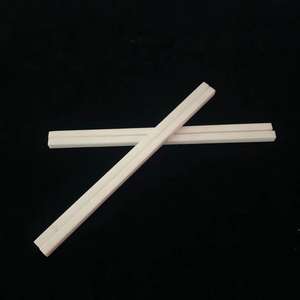
Catalyst Support Aluminum Oxide 99% High Alumina Ceramic Ball
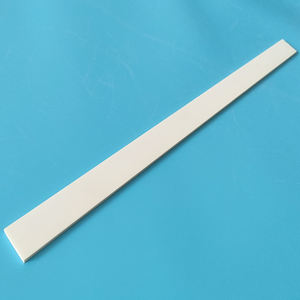
Wear Resistant Alumina Ceramic Liners with Aluminum Oxide 92% 95% for Mining Industry
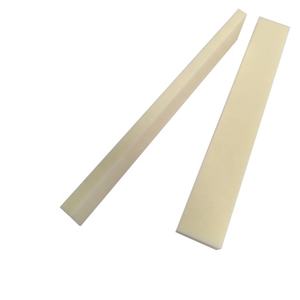
Factory High Hardness Alumina Ceramic Parts Aluminum Oxide Chemical Stability Ceramic Shaft
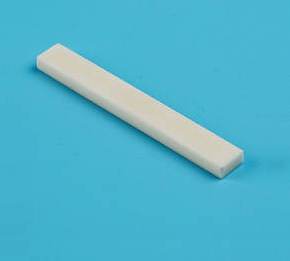
Aluminum Oxide Ceramic Basket Gemstone with Zirconia Ceramic Gravel 38.1*25*23mm
